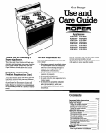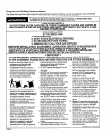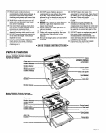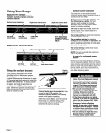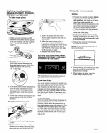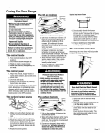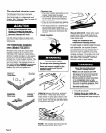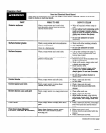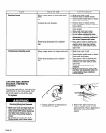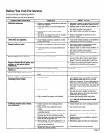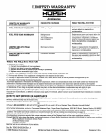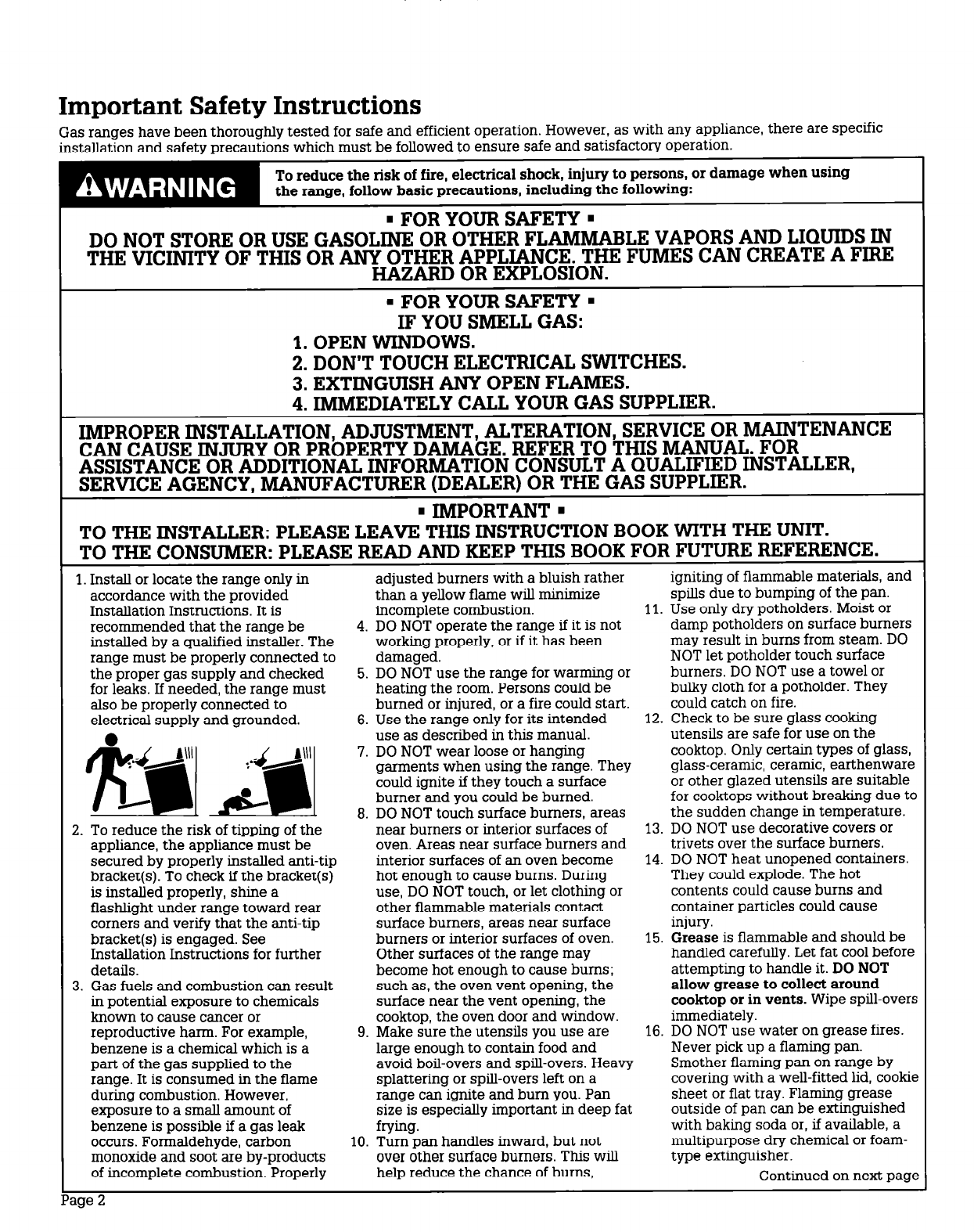
Important Safety Instructions
Gas ranges have been thoroughly tested for safe and efficient operation. However, as with any appliance, there are specific
installation and safety precautions which must be followed to ensure safe and satisfactory operation.
To reduce the risk of fire, electrical shock, injury to persons, or damage when using
the range, follow basic precautions, including the following:
. FOR YOUR SAFETY.
DO NOT STORE OR USE GASOLINE OR OTHER FLAMMABLE VAPORS AND LIQUIDS IN
THE VICINITY OF THIS OR ANY OTHER APPLIANCE. THE FUMES CAN CREATE A FIRE
HAZARD OR EXPLOSION.
. FOR YOUR SAFETY .
IF YOU SMELL GAS:
1. OPEN WINDOWS.
2. DON’T TOUCH ELECTRICAL SWITCHES.
3. EXTINGUISH ANY OPEN FLAMES.
4. IMMEDIATELY CALL YOUR GAS SUPPLIER.
IMPROPER INSTALLATION, ADJUSTMENT, ALTERATION, SERVICE OR MAINTENANCE
CAN CAUSE INJURY OR PROPERTY DAMAGE. REFER TO THIS MANUAL. FOR
ASSISTANCE OR ADDITIONAL INFORMATION CONSULT A QUALIFIED INSTALLER,
SERVICE AGENCY, MANUFACTURER (DEALER) OR THE GAS SUPPLIER.
. IMPORTANT .
TO THE INSTALLER: PLEASE LEAVE THIS INSTRUCTION BOOK WITH THE UNIT.
TO THE CONSUMER: PLEASE READ AND KEEP THIS BOOK FOR FUTURE REFERENCE.
1. Install or locate the range only in
accordance with the provided
Installation Instructions. It is
recommended that the range be
installed by a qualified installer. The
range must be properly connected to
the proper gas supply and checked
for leaks. If needed, the range must
also be properly connected to
electrical supply and grounded.
2. To reduce the risk of tipping of the
appliance, the appliance must
be
secured by properly installed anti-tip
bracket(s). To check if the bracket(s)
is installed properly, shine a
flashlight under range toward rear
corners and verify that the anti-tip
bracket(s) is engaged. See
Installation Instructions for further
details.
3. Gas fuels and combustion can result
in potential exposure to chemicals
known to cause cancer or
reproductive harm. For example,
benzene is a chemical which is a
part of the gas supplied to the
range. It is consumed in the flame
during combustion. However,
exposure to a small amount of
benzene is possible if a gas leak
occurs. Formaldehyde, carbon
monoxide and soot are by-products
of incomplete combustion. Properly
adjusted burners with a bluish rather
than a yellow flame will minimize
incomplete combustion.
4. DO NOT operate the range if it is not
working properly, or if it has been
damaged.
5. DO NOT use the range for warming or
heating the room. Persons could be
burned or injured, or a fire could start.
6. Use the range only for its intended
use as described in this manual.
7. DO NOT wear loose or hanging
garments when using the range. They
could ignite if they touch a surface
burner and you could be burned.
8. DO NOT touch surface burners, areas
near burners or interior surfaces of
oven. Areas near surface burners and
interior surfaces of an oven become
hot enough to cause burns. During
use, DO NOT touch, or let clothing or
other flammable materials contact
surface burners, areas near surface
burners or interior surfaces of oven.
Other surfaces of the range may
become hot enough to cause bums;
such as, the oven vent opening, the
surface near the vent opening, the
cooktop, the oven door and window.
9. Make sure the utensils you use are
large enough to contain food and
avoid boil-overs and spi&overs. Heavy
splattering or spill-overs left on a
range can ignite and bum you. Pan
size is especially important in deep fat
frying.
10. Turn pan handles inward, but not
over other surface burners. This will
help reduce the chance of burns,
igniting of flammable materials, and
spills due to bumping of the pan.
11. Use only dry potholders. Moist or
damp potholders on surface burners
may result in burns from steam. DO
NOT let potholder touch surface
burners. DO NOT use a towel or
bulky cloth for a potholder. They
could catch on fire.
12. Check to be sure glass cooking
utensils are safe for use on the
cooktop. Only certain types of glass,
glass-ceramic, ceramic, earthenware
or other glazed utensils are suitable
for cooktops without breaking due to
the sudden change in temperature.
13. DO NOT use decorative covers or
trivets over the surface burners.
14. DO NOT heat unopened containers.
They could explode. The hot
contents could cause burns and
container particles could cause
injury.
15.
Grease
is flammable and should be
handled carefully. Let fat cool before
attempting to handle it.
DO NOT
allow grease to collect around
cooktop or in vents.
Wipe spill-overs
immediately.
16. DO NOT use water on grease fires.
Never pick up a flaming pan.
Smother flaming pan on range by
covering with a well-fitted lid, cookie
sheet or flat tray. Flaming grease
outside of pan can be extinguished
with baking soda or, if available, a
multipurpose dry chemical or foam-
type extinguisher.
Continued on next page
3ge 2



